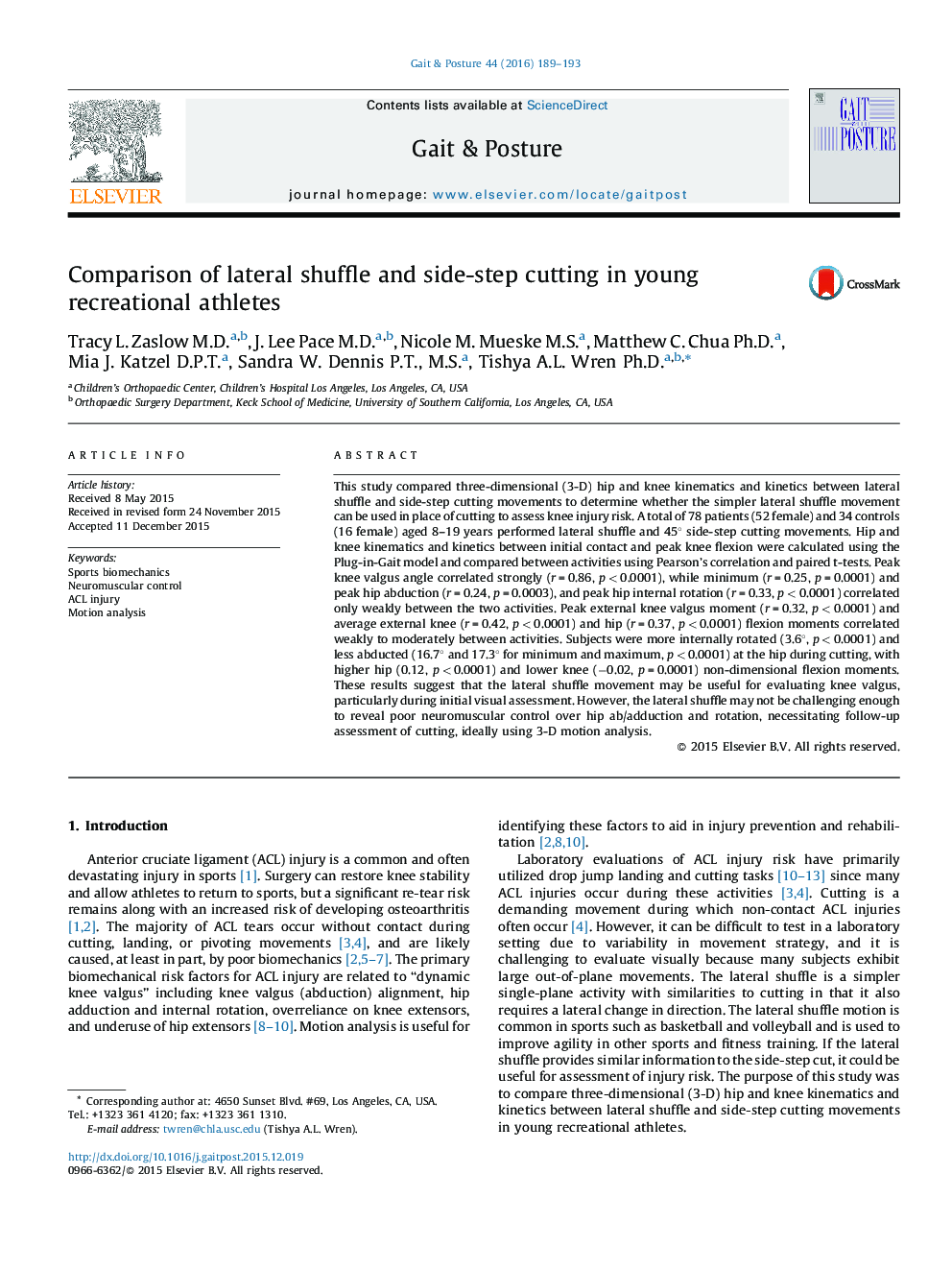| کد مقاله | کد نشریه | سال انتشار | مقاله انگلیسی | نسخه تمام متن |
|---|---|---|---|---|
| 4055557 | 1603851 | 2016 | 5 صفحه PDF | دانلود رایگان |
• Knee valgus angle correlates strongly between lateral shuffle and side-step cutting.
• The hips are less abducted and more internally rotated during cutting.
• Lateral shuffle may be useful for early or visual assessment of knee valgus.
• Evaluation of cutting is needed to reveal poor hip control.
This study compared three-dimensional (3-D) hip and knee kinematics and kinetics between lateral shuffle and side-step cutting movements to determine whether the simpler lateral shuffle movement can be used in place of cutting to assess knee injury risk. A total of 78 patients (52 female) and 34 controls (16 female) aged 8–19 years performed lateral shuffle and 45° side-step cutting movements. Hip and knee kinematics and kinetics between initial contact and peak knee flexion were calculated using the Plug-in-Gait model and compared between activities using Pearson's correlation and paired t-tests. Peak knee valgus angle correlated strongly (r = 0.86, p < 0.0001), while minimum (r = 0.25, p = 0.0001) and peak hip abduction (r = 0.24, p = 0.0003), and peak hip internal rotation (r = 0.33, p < 0.0001) correlated only weakly between the two activities. Peak external knee valgus moment (r = 0.32, p < 0.0001) and average external knee (r = 0.42, p < 0.0001) and hip (r = 0.37, p < 0.0001) flexion moments correlated weakly to moderately between activities. Subjects were more internally rotated (3.6°, p < 0.0001) and less abducted (16.7° and 17.3° for minimum and maximum, p < 0.0001) at the hip during cutting, with higher hip (0.12, p < 0.0001) and lower knee (−0.02, p = 0.0001) non-dimensional flexion moments. These results suggest that the lateral shuffle movement may be useful for evaluating knee valgus, particularly during initial visual assessment. However, the lateral shuffle may not be challenging enough to reveal poor neuromuscular control over hip ab/adduction and rotation, necessitating follow-up assessment of cutting, ideally using 3-D motion analysis.
Journal: Gait & Posture - Volume 44, February 2016, Pages 189–193
